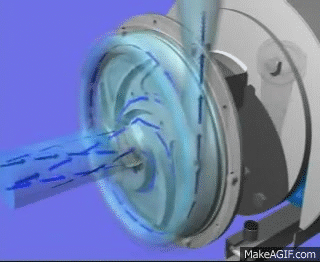Standard vs. Reverse rotation

Belt Paths
Refer to the belt path diagram under the hood, typically located on the fan shroud or front fender brace, or locate the water pump pulleys on the vehicle. Compare the diagrams below. Water pump pulleys running on the inside surface of the belt indicate a Standard Rotation water pump (grooved side of belt). Water pump pulleys running on the outside surface of the belt indicate a Reverse Rotation water pump (flat or smooth side of belt).

We field a lot of cooling questions in our workday. When the question arises, "Is this a standard or reverse rotation engine set-up?", the customer's own vehicle holds the clearest answer. If you look under the hood on most late-model light trucks and automobiles, you will find a belt path diagram that guides you in the installation of the fan belt on your engine. Alternatively, locate the water pump pulley on the diagram (on the front of the engine if you cannot find the diagram). Inspect the belt and water pump pulley to determine if the pump is driven by the inside or outside of the belt and you have answered the question.
Casting design and the cutwater also influences the rotational direction
The cutwater in the casting acts as a flow divider, guiding the coolant smoothly from the impeller into the volute of the pump casing. However should fluid flows against the cutwater, it can create turbulence, pressure fluctuations, and uneven flow distribution within the pump, leading to reduced efficiency and potential damage.
Pump Impeller Vane Angle

You can also look at the impeller vanes to understand flow. It is commonly assumed that curved veins "cup" water. A centrifugal pump does NOT cup water. Water is drawn into the eye of the impeller and flung out as the vanes pass through the fluid and create a pressure differential. While the illustrative animation is not an automotive pump it is a visual tool that explains this idea quite well.


Comments on this post (0)